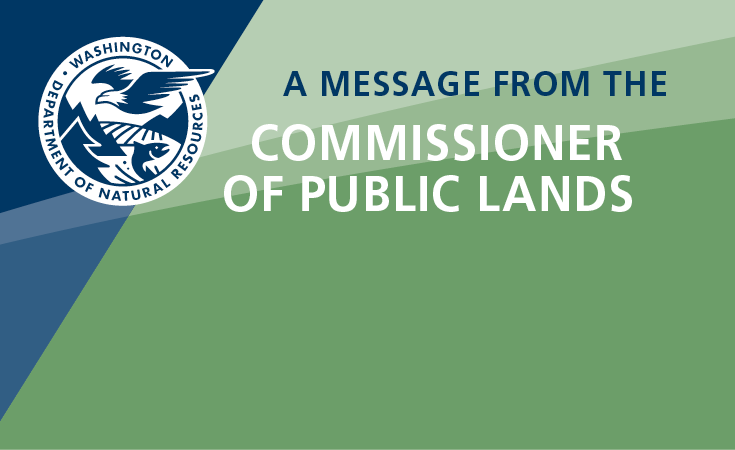Identifying Mature and Old Forests in Washington
As part of its role to guide protection and enhancement of habitats for "threatened" and "endangered" wildlife species, while ongoing natural resource management continues, the State Trust Lands Habitat Conservation Plan guides DNR’s conservation of uncommon habitats. These include talus fields, caves, cliffs, oak woodlands, large snags, balds, mineral springs, and large, structurally unique trees, often referred to as 'old growth.' By protecting these uncommon habitats, we help protect the species that depend on them.
In keeping with the Trust Lands HCP objectives for conservation of critical habitats, old-growth forest in the six Westside HCP planning units also is protected through DNR’s overarching Policy for Sustainable Forests.
Guides for Identifying Old trees and Forests in Washington by Robert Van Pelt
Following the completion of the 2005 project, Definition and Inventory of Old Growth Forests on DNR-Managed State Lands, we produced two guides for identifying old trees and forests in Washington: Identifying Mature and Old Forests in Western Washington and Identifying Old Trees and Forests in Eastern Washington, both written by Robert Van Pelt, PhD.
These guides provide readers with the knowledge and tools needed interpret the ecology, disturbance history (such as fire), and age of a given stand or a tree -- information one needs to reconstruct the history and determine the age of a tree or an entire tree stand.
Identifying Mature and Old Forests In Western Washington
Document in sections (high resolution):
- Cover and Introduction
- Environmental Settings of Western Washington
- Stand Development in Natural Douglas fir Forests
- Douglas Fir
- Sitka Spruce
- Noble Fir
- Western Hemlock
- Western Redcedar
- Pacific Silver Fir
- Conclusion and Back Cover
Identifying Old Trees and Forests In Eastern Washington
Document in sections (high resolution):
- Cover, Table of Contents, Introduction, Environmental Setting of Eastern Washington
- Forested Vegetation Zones Eastern Washington
- Fire in Eastern Washington Prior to Euro-American Settlement
- Stand Development Following Stand-replacing Wildfire
- Insect Outbreaks, Mistletoes
- Ponderosa Pine - Part One
- Ponderosa Pine - Part Two
- Western Larch - Part One
- Western Larch - Part Two
- Douglas Fir
- Grand Fir
- Engelmann Spruce-Subalpine Fir
- Westside Species, Conclusion, Glossary, Back Cover


